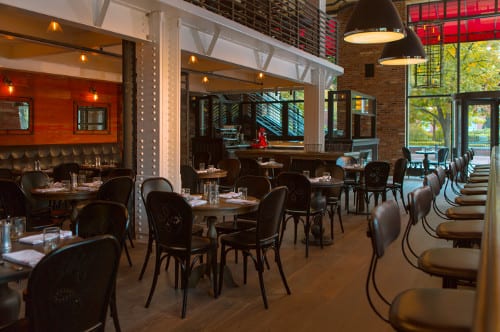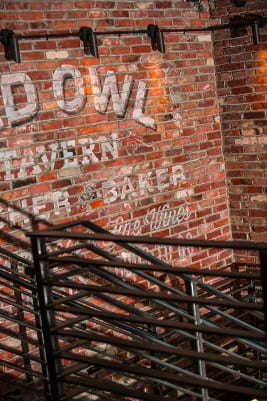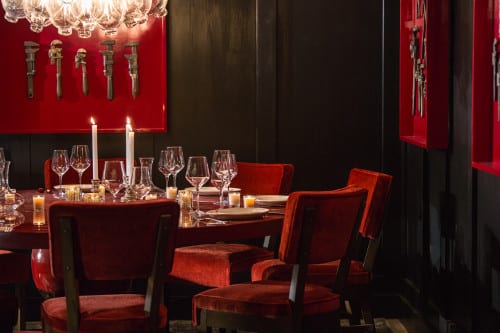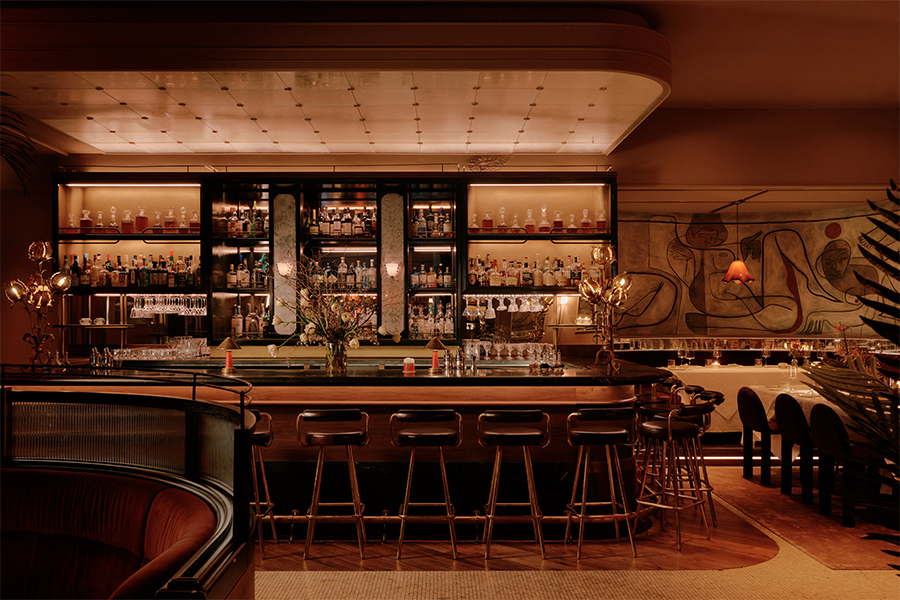Amid beloved museums, archives, and galleries, a newly built restaurant blends into the historic culture of Philadelphia. Red Owl Tavern, built beneath the recently redesigned Hotel Monaco, invites diners to experience food with an artisanal and rustic background. With a bi-level, mainly brick space to work with, designer Mark Zeff of New York-based MARKZEFF Design used influences from industrial American-working spaces and the colonial era. Acting like the discovered basement of the city with its antique touches and dark canvas, Red Owl Tavern’s design makes it Philadelphia’s newest historic experience.

Hearty entrees and local ingredients inspired the restaurant’s design. “It’s pretty much the style of the restaurant in terms of the food,” says Zeff. “It’s simple, attainable, not high-end, with a healthy artisanal appeal.” With the mezzanine floor, an extensive bar, and a takeout area, and several varieties of seating, the Tavern exhibits a comfortable farm aesthetic. Different varieties of tables, all designed by the team and built with slightly varying heights and moldings, make each appear unique. Worn booths and banquettes suggest an old train café. Everything feels found or discovered, but several pieces, such as the cast zinc bar, were crafted to resemble antiques.

“The zinc bar has a life of its own,” says Zeff. With the rich crème tone against the surrounding wood, another theme, that of rich against poor, emerges. Contrasting with the shine of the bar are industrial lights that appear aged and rusted. Brick walls give the entrance and stairwell an authentic, artisan tone, while red-hued wood planks infuse rich color. The floors on the first level are rough-hewn, dark wood, while concrete covers the floors upstairs. Café-style furniture, Amish-influenced chairs, and American Colonial tastes are scattered throughout the industrial atmosphere.

“We sort of came up this industrial barn concept. We wanted to make it look like it’s aged and going to keep aging,” says Zeff, pointing the boards that were painted and then rubbed off, and painted metalwork that adds a 1940s effect.

As for the color palette: “We went with the color of the 19th-century red that you would find on old American barns and that kind of brackish, beautiful saturated orange or red,” says Zeff. Against the burnt-red and wood walls, industrial implements, like rusted tools, are mounted on lacquered framed boxes for artwork. “That is a definite talking point,” says Zeff. “They don’t look happy.”

“What we tried to do is create authenticity, not something that was a pastiche of something else,” Zeff adds. “We wanted to create something that has always been there.”



